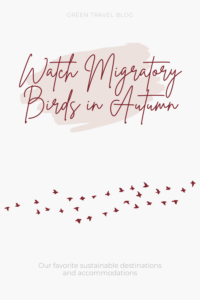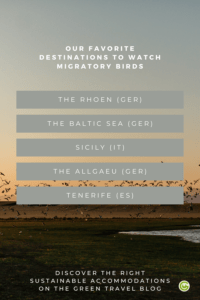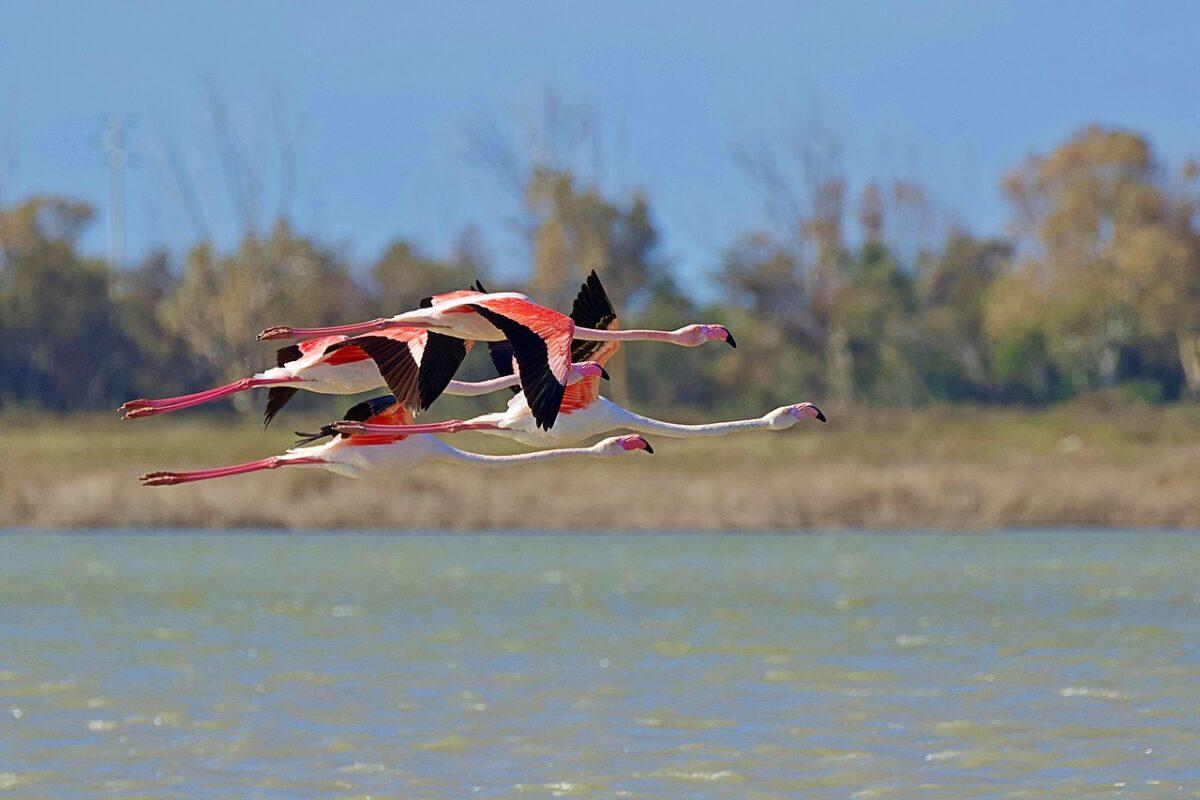If you look up in the sky in September and October, you may be lucky enough to see migrating birds on their fall migration. They fly in a V-shaped formation as they head for the warmth. Does this make you long for the same? In this article, we will look at what migratory birds can teach us about our own travel habits. We will also tell you about great places to watch birds during this time and about projects in the Canary Islands and Sicily that actively support migratory birds.
Study: Migratory birds under threat
An estimated 50 billion migratory birds are on the move every year. Twice a year, they travel back and forth between their wintering and breeding grounds, covering impressive distances. But according to a British study published in 2022, an increasing number of migratory birds are not surviving their journeys – and humans are largely to blame!
The man-made threats to migratory birds are
- Loss of habitat (breeding, resting, wintering)
- Wind turbines
- High voltage power lines
- Glass panes
- Light pollution
- Climate change
- Hunting
- Electrosmog
- Pesticides in the soil
Here’s what you can learn about sustainable travel from migratory birds
Although we humans are migratory birds’ worst enemy (albeit unintentionally), there is much we can learn from them.
Save energy: The German Aerospace Center (DLR) announced in 2021 that it will study the resource-saving flight patterns of migratory birds for commercial aircraft. According to the DLR, migratory birds in a V formation not only fly in the slipstream of the lead bird, but also literally “surf” on the air vortex it creates. This saves enormous amounts of energy and is therefore very interesting for civil aviation.
Traveling light: A godwit holds the current world record for migratory birds: in just nine days, it flew 11,000 kilometers from Alaska to New Zealand without a single stop. Scientists figured that out with the help of a mini-transmitter. But they also discovered this: To reduce its “weight,” the godwit’s organs and even its heart shrink! (The sawed-off toothbrush in UL Trekking is nothing against it!)
Orientation: It is not well understood how migrating birds orient themselves. However, it seems that they do not rely on a single orientation system (as we do today with GPS), but use a combination. On the one hand, they have a stored map, and on the other hand, they orient themselves by the stars, the position of the sun and the earth’s magnetic field!
Swifts sleep in flight
Moving on to the different types of migratory birds, let’s start with one of my personal favorites: the swift! You could see them this summer in Germany. At STURM in the Rhön, they circle the STURM tower from spring to fall.
Swifts spend most of their lives in the air – they eat in the air (they catch insects in flight), they mate in the air and they sleep in the air. But when they sleep, one eye stays awake! In fact, these remarkable birds sleep with only one half of their brain while the other keeps watch.
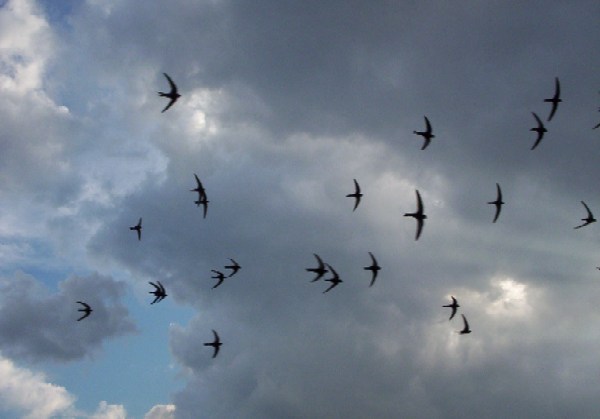

Swifts nest on steep walls. They are helpless on the ground with their puny little feet. If you ever find a swift that has crashed, it is best to take it to a professional bird rescue center, as feeding them is especially complicated.
Goldfinches wintering in Germany
When the swifts have left for Africa in the fall, the goldfinches come from Northern and Eastern Europe and spend the winter in Western Europe. Germany is warm enough for them, and they find plenty of food in STURM’s extensive hotel garden (birder’s tip: goldfinches prefer to sit in the treetops).
“Our last count in April/May 2023 showed 17 different bird species in the hotel garden” – STURM
In general, the Rhön Biosphere Reserve is an excellent area for bird watching and is also home to the “Thuringian Rhön” bird sanctuary, which covers almost 20,000 ha.
Cranes resting on the Baltic Sea
A well-known highlight for birdwatchers is the crane resting on the Baltic Sea. During the fall migration, thousands of cranes migrate from Sweden to Spain and rest at the Baltic Sea for several weeks between September and October. This is where the family-friendly cottages of Gut Nisdorf are located.

“The flocks of cranes fly low over our manor almost every day. There is no better place to watch cranes.” – Gut Nisdorf
Many tourists travel specifically for this event, and you can also book guided boat trips to see the cranes or attend lectures if you are interested.
Northern Birds Cross the Black Forest in Fall Migration
According to the sustainable hotel SCHWARZWALD PANORAMA, the Black Forest National Park is the perfect place to watch the fall migration of Nordic birds. Most of them cross the Black Forest without stopping. However, species such as the starling, the chaffinch or the wood pigeon can be easily observed as they fly in large flocks during the day. The nightingale or the cuckoo, on the other hand, are difficult to spot because they fly alone and travel at night.
Whinchat resting in the Black Forest
One bird that rests in the Black Forest on its flight from Finland to Africa is the whinchat. The whinchat is the “NABU Bird of the Year 2023” and an endangered species. This is mainly because the whinchat builds its nests on the ground in meadows and feeds on insects from the ground. Meadows are disappearing in favor of farmland, and the use of pesticides deprives it of its food source.
Waterfowl sanctuaries along the Lech
The fall migration can also be easily observed in the Allgäu region. Hotel Das Rübezahl is located in the middle of mountains, lakes and the royal castles of Neuschwanstein and Hohenschwangau. Here, the fall migration is “always something special,” they tell us. “Many flocks of birds rest right in front of our fields. There are also 18 waterfowl sanctuaries on the nearby Lech River.
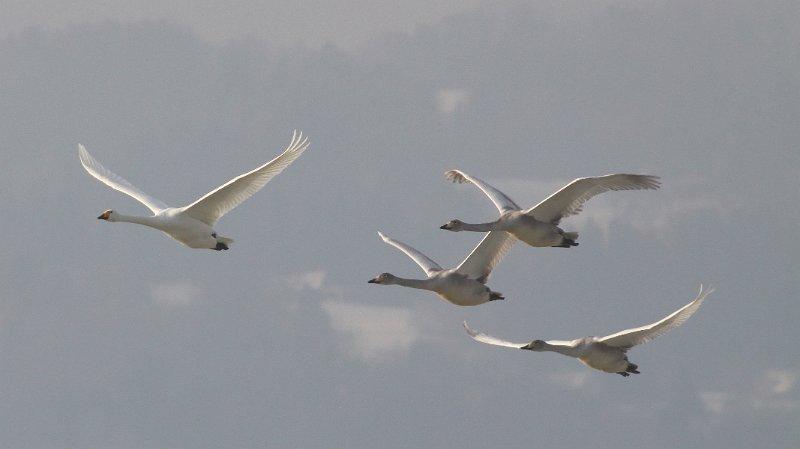
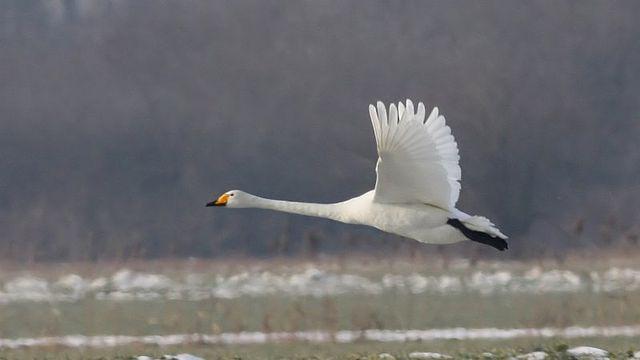
A much-traveled winter guest in the Lech Valley, for example, is the whooper swan. Its breeding grounds are in the Siberian taiga. Unlike other swans, the Whooper Swan has a large vocal repertoire. Its call is often compared to a trombone.
The largest bird of prey in the Lech Valley is the eagle owl. It feeds on the waterfowl that winter here.
Seabird watching in Tenerife
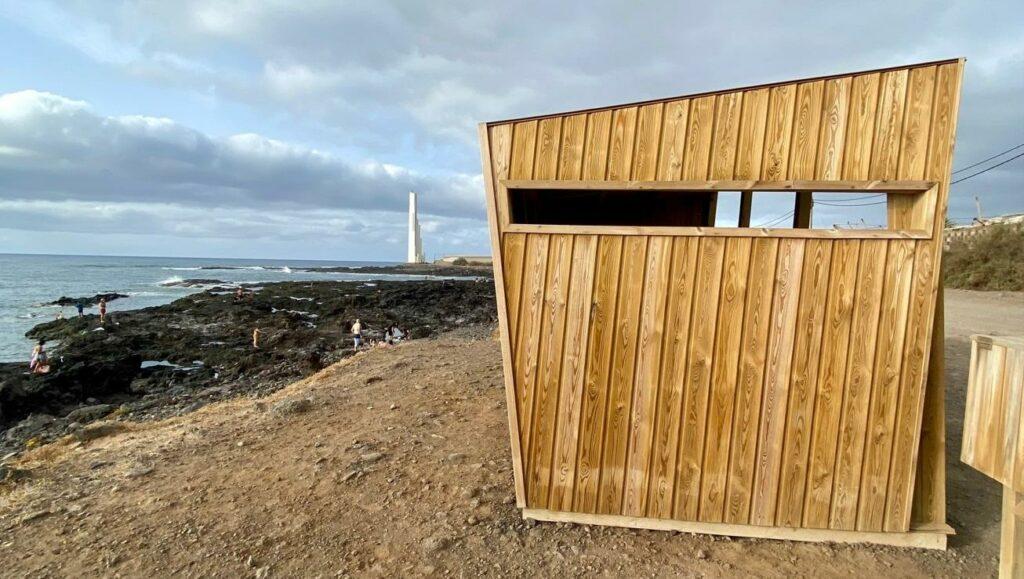
While Germany is warm enough for some migratory birds, most migrate to even warmer areas – preferably as far away as Africa. The Canary Islands (home of my personal favorite bird: the canary – bright yellow and a master of song) is also a popular winter home. As the bird watching signs outside the OCÉANO Health Spa Hotel in Tenerife tell us, very few of the seabirds there breed on the island. Instead, migratory birds such as the heron winter here off the west coast of Africa and find their food in the Atlantic Ocean. The national government of Tenerife has established a total of 39 bird sanctuaries to protect both the local bird population and migratory birds.
According to the Green PearlsⓇ partner, as many as 200 species of migratory birds fly over the Canary Islands every year. One bird that is very common in Tenerife and can be observed from the OCÉANO Health Spa Hotel is the Monarch Swift. This is related to the swift mentioned above!
Bird sanctuary in Sicily
If you are wondering how you can help migratory birds, there is the Foundation Pro Biodiversity foundation in Bielefeld, Germany. For four million euros in donations, they bought a 390-hectare wetland in Sicily, which is an important resting and wintering place for many migratory birds (such as the flamingo). Due to illegal dumping, hunting, chemicals and poor water management, this migratory bird hotspot had become completely unsafe for plumage. In addition, about 40 volunteers in the southwest of the island protect Bonelli’s eagles from raptor poachers.
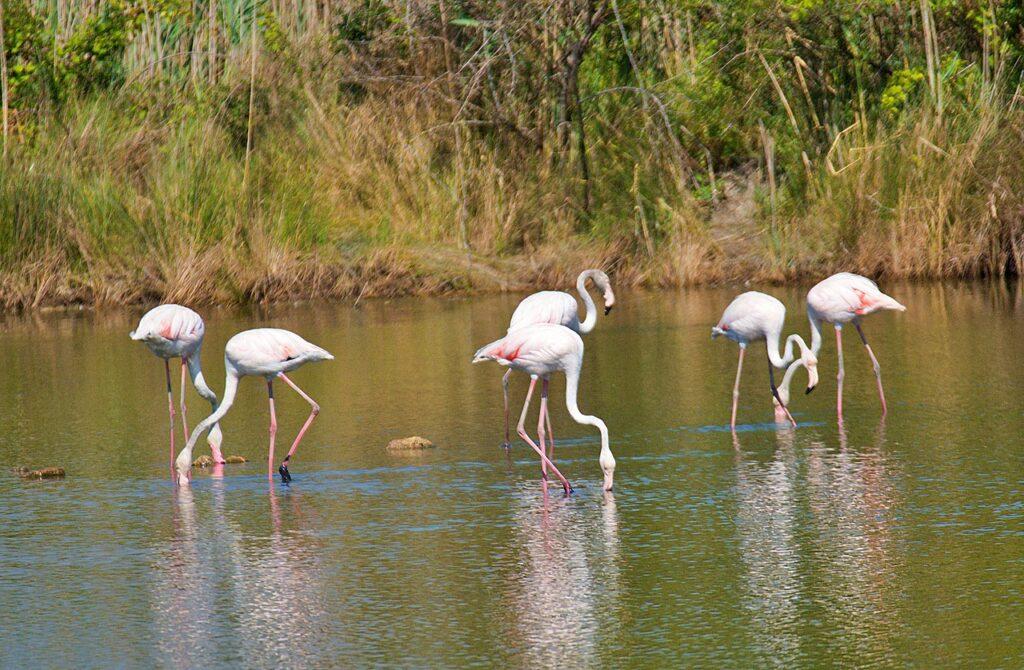
Our partner, the ADLER Spa Resort SICILIA, is located on the southern side of the Italian island. This resort is right on a wild beach that is also a bird sanctuary. The staff here also clean the beach daily from washed up marine plastic – another problem for water birds and thus another important step in preserving the biodiversity of our planet.
What do you think? Do you enjoy watching migratory birds? As always, we welcome your tips and comments!
Save this article to pinterest!
